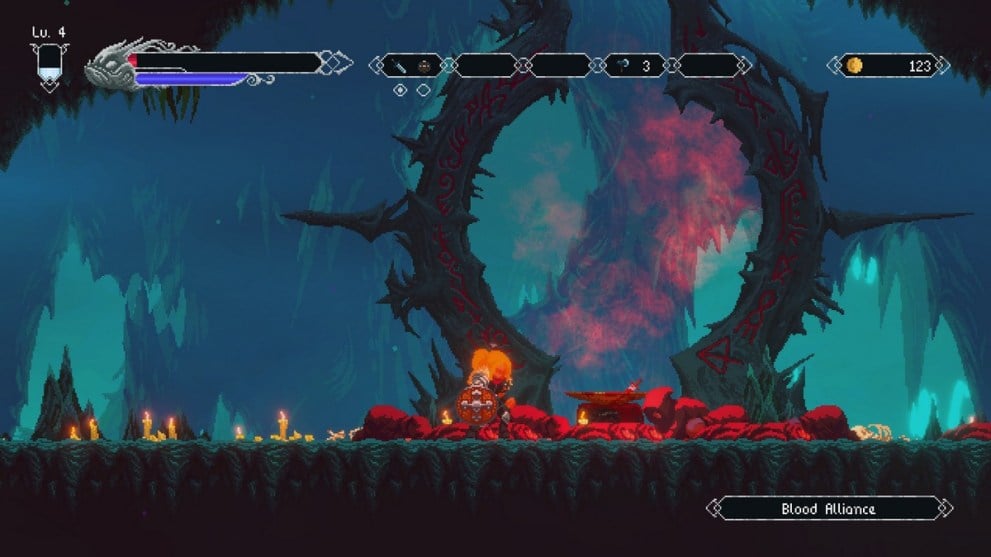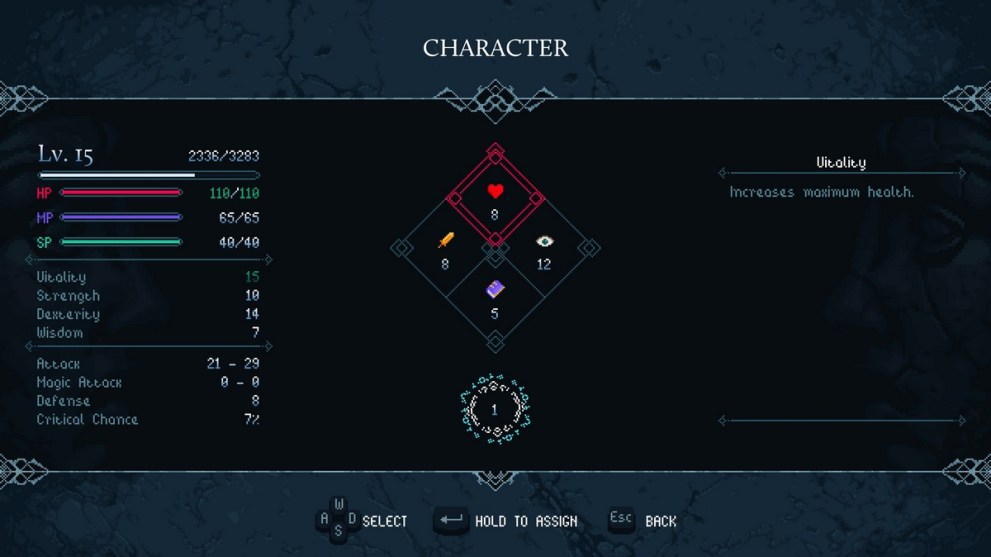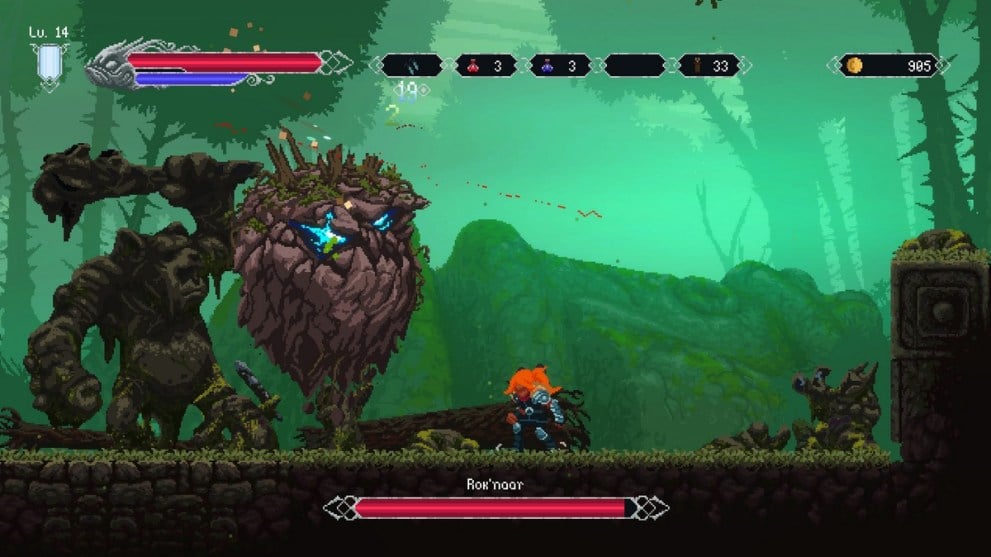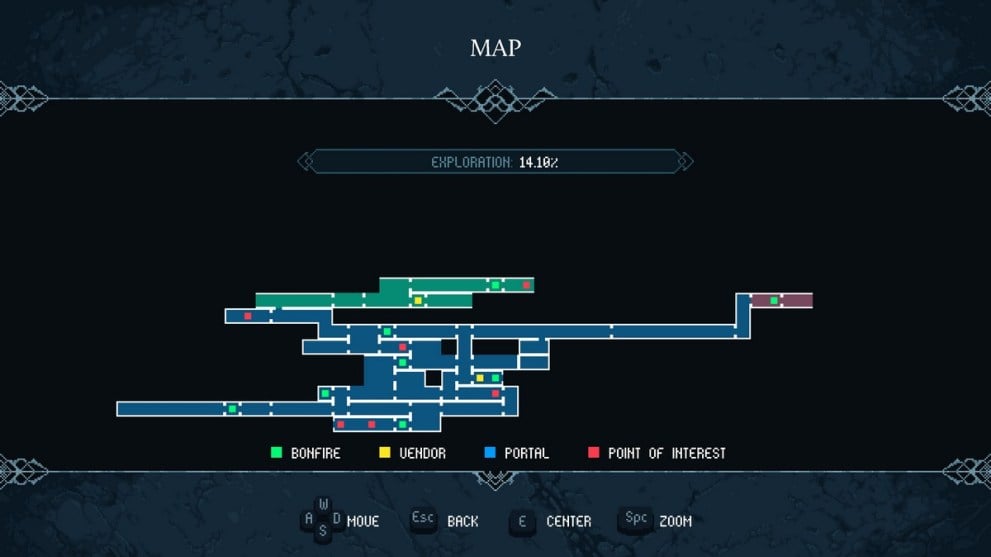Elderand on PC
In today’s gaming landscape, indie games are no longer the niche they once were, oftentimes standing toe to toe with many of the AAA blockbusters that vie for the attention of players. And as the market gets more saturated, it can be a difficult challenge trying to stand out from the crowd, and one good way of rising above the noise is to take inspiration from classics and add your own twist to it. For fans of the Metroidvania genre, publisher Graffiti Games and indie studios Mantra and Sinergia Games’ Elderand is definitely worth a look, even if there are some rough edges to this pixellated adventure.

As a mercenary tasked with a target, things quickly unravel, and the stakes get raised, and it is on this path of survival and triumph that players will find plenty of enjoyment and an occasional helping of frustration. At first glance, there is a deep reverence for the forebears that came before it, with Castlevania: Symphony of the Night a particular font of inspiration.
The scale of exploration and secrets, as well as the roleplaying elements, are also present in Elderand, and help to enhance an otherwise typical action adventure. Mix in the Soulslike combat for the more intimidating of foes, and it seems like Elderand is on the right track.
The interconnected world of different biomes and difficulty found in Elderand is pretty well designed, from the forested starting areas to the darker, more Lovecraftian designs as players progress deeper into the madness. The sidescrolling movement is pretty much standard fare, but with secret areas and hidden rooms to be found, every box that appears in the growing map hints at much more to come.

Movement feels snappy, although there are issues with jumps not exactly feeling fine-tuned for more precise platforming. That usually doesn’t make much of a difference when you are just trying to get around, but when it involves avoiding attacks, then things can get messy really fast. It does get better once you have unlocked the ability to double jump, but some tweaking will be welcomed by those more accustomed to the high standards of the genre.
And as you gain more skills in Elderand, there is more incentive to visit past areas in search of more loot to make yourself powerful. The game has a nice balance between teasing players with potential treasures and doling out upgrades that make it possible to get to them, and it never once felt particularly arduous or a waste of time trying to fill in every area of the map.
As for the combat, it is helped by the biggest strength of Elderand, what with its huge arsenal of bloodthirsty weapons and attacks that goes well with over 60 different types of enemies and bosses that call this cursed land home. While your starting sword and shield are dependable, they will soon give way to more fantastical combinations like whips, swords, daggers, axes, bows, and more.

With every weapon coming with different stats and skills, the game allows for different playstyles to flourish, especially when you consider the roleplaying aspect of Elderand. Although players are given just four key areas to pump their hard-earned stat points into, finding the right build and maximizing the damage you can deal can lead to thoroughly satisfying combat encounters. Experimentation and crafting to upgrade your gear oftentimes lead to surprising results, and with sub-weapons to augment the offence, Elderand has a solid foundation in which its combat can shine.
That said, those opportunities are not as common as they should be, with cannon fodder enemies not exactly providing enough of a challenge. While there are many ways to approach enemies, and they do fight quite differently, as long as you are dealing an increasing amount of damage before they have a chance to retaliate, the combat becomes a cakewalk. Even with its variety, things can get old quickly, and backtracking through familiar areas can exarcebate the issue.
At least the various bosses offer up more of a fight, but there is certainly room for more creative uses of Elderand’s enemies beyond just a numbers game, especially for players willing to grind to get stronger throughout the game.

However, despite some misgivings, Elderand is packaged in an attracitve pacakge, with its art design a reliable source of delight at every turn. From the character customization to its digusting enemies, each new area players get to explore in the game is teeming with details, helping bring to life a wretched world in need of hope. The hand-drawn environments stand out immediately, and most of the animation work is top nothch.
And while Elderand chooses to tell its story through lost letters and ill-fated correspondence from those that came before, it is not going to be something that works for everyone. Granted, it does foster a sense of purpose to explore every nook and cranny for those that want to immerse themselves, but it also alienates those that are on a beeline to the end and perhaps not getting the full picture. There is no right way to go about it, but be sure to set your expectations right in this sense.
At the end of the day, not many games come close to a masterpiece like Castlevania: Symphony of the Night, but Elderand tries in its own way to honor its inspiration. Exploration is a fun endeavor enhanced by great art design, the RPG system has the potential to do much more, but its combat can be hit or miss. The storytelling follows the same path, but for players looking for Lovecraftian creatures to kill and glorious gothic aesthetics, Elderand will fit the bill.
Pros
Cons
Storytelling might not work for everyone.
Combat can become too straightforward.
